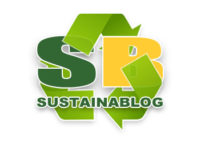Just as the slow food movement prompted us to think about where and how our food was being produced — agricultural practices, worker safety, cleanliness of factories, treatment of animals, etc. — “slow fashion” encourages fashion “consumers” to consider where and how their clothing is being made and to develop a greater sense of connection to the materials taken from the environment to create their looks.
The term “slow fashion” was first coined by Kate Fletcher of the Centre for Sustainable Fashion in 2007 to represent one cohesive movement of sustainable and ethical practices as it relates to fashion design, manufacturing and consumption. It is an alternative to the typical “fast fashion” system of over-consuming inexpensive clothing for the sake of dressing in the season’s latest trends.
“Fast fashion” involves producing high volumes of clothing as quickly as possible to be worn for a short period and later disposed. Oftentimes, customers are unaware of the true production processes, mainly the harmful effects on the environment and people. This way of consuming has led to overcrowded landfills and buyers who are unconcerned with how their clothing disposal habits excessively take vital resources from the planet.
On the other hand, “slow fashion” designers acknowledge that their decisions affect the environment and people and utilize local materials, suppliers and manufactures to create their garments. These practices help to lessen material waste, pollution, energy use and carbon footprints.
Designers of this movement ensure the longevity of their garments by purchasing higher quality fabrics, oftentimes handmade, and offering customers timeless pieces to be worn for many years. Clothing may cost more due to the designers’ commitment to use environmentally-friendly resources and pay workers fair wages.
It’s a fashion faux pas to believe there’s a one-size fits all system to manage the quickly evolving world of style and design; rather, the slow fashion movement hopes to start a conversation among designers, consumers, manufactures and retailers to find a solution that ends damaging effects on the environment and people and remains fabulously chic.
Image credit: Polska Zielona Sieć via photo pin cc

